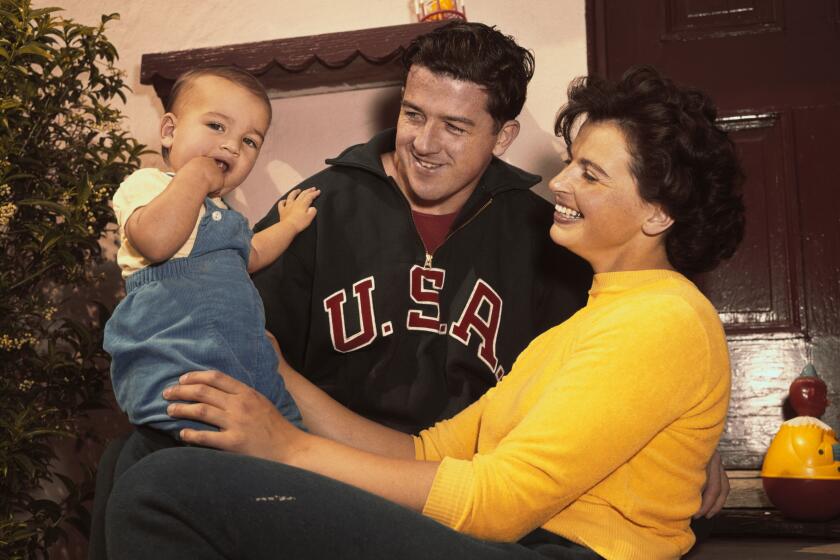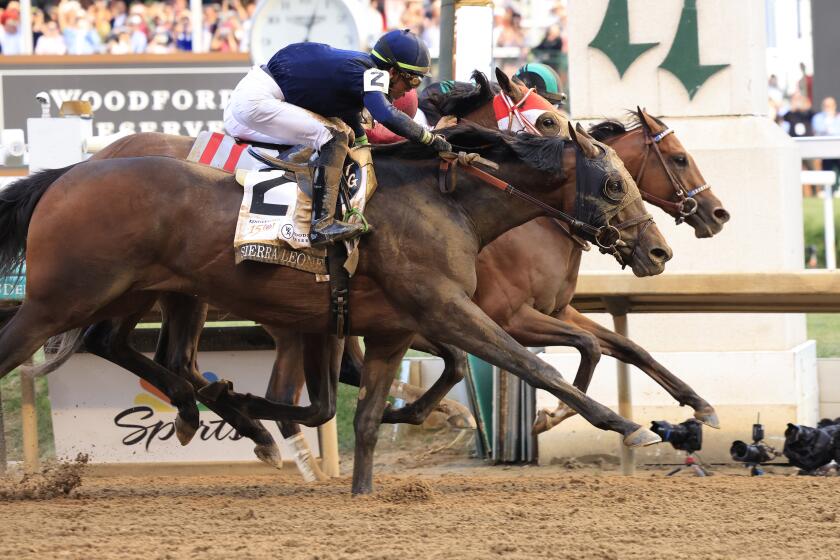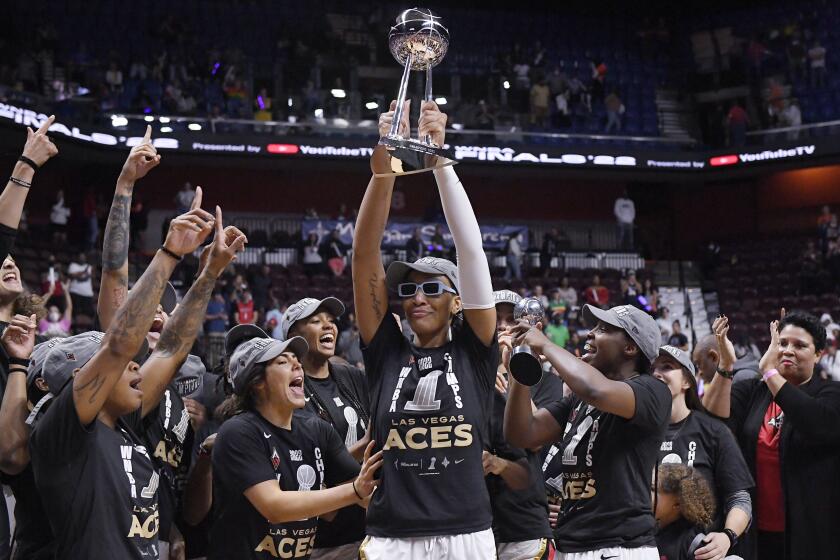Al Davis a Greedy Meany? Some Stadium Perspective
So you think Al Davis is one of the meanest guys in sports? Wrong.
Sure, it’s hard to teach the uninitiated in the dalliances and wanderings of Davis and his Raiders. The easy part is explaining why the Raiders left Oakland and ended up in Los Angeles with a contract that put the Coliseum in the red following the Rams move to Anaheim.
It’s harder fathoming why Irwindale offered the Raiders a $115-million stadium in a gravel pit and let Davis keep $10 million when the deal fell through. And it’s ironic that after all its litigation with Davis, the Los Angeles Coliseum Authority is contemplating giving him more than $60 million and tearing down the Coliseum to keep the Raiders from returning to Oakland or going to Sacramento.
But you can always count on someone being worse off.
Take St. Petersburg, home of the new $85-million Florida Suncoast Dome, notable mainly for its lack of a baseball team. St. Pete spent a year making passes at the Chicago White Sox, residents of Comiskey Park. Florida even promised the Sox a $30-million bonus to show up. That’s why Chicago is spending $150 million to build the baseball team a stadium that could require a taxpayer subsidy of $657 million over the next 20 years. Even so, the owner of the Sox later implied that staying in Chicago was an act of civic generosity.
Al Davis is almost starting to look like just another reasonable free-enterpriser trying to make a buck. He is not asking for anything that hasn’t been done since AD 97, the year the publicly financed Coliseum opened its gates in Rome (capacity 50,000, no skyboxes). That venue did a land-office business in gladiator fights, chariot races and match-ups between lions and Christians.
Don’t laugh. Maryland officials cited Roman precedent in 1987 when they tried to prevent citizens from voting on a new publicly financed $160-million ballpark for the Orioles. Wrote state Atty. Gen. J. Joseph Curran Jr.: “Rome in the zenith of her power not only constructed the Coliseum at Rome, but caused similar structures to be erected and maintained in various large cities . . . for the entertainment and edification of the public.”
Around the country, about 20 cities are considering, planning or building new stadiums or domes. In addition to the Raiders, four other football teams are angling for new stadiums or renovations. Seven major-league baseball teams want new ballparks or will soon move into them.
Most stadiums operate at a public loss. Pro football stadiums host eight home games a year, one or two exhibition games and--for the lucky few--a couple of playoff games. Baseball stadiums host 81 home games a year. The rest of the time, stadiums depend on rock concerts, monster truck matches and religious revivals to pay the bills. Mostly they don’t.
When New Orleans built its Superdome in 1970s, costs ballooned from an estimated $35 million to $163 million. A hoped-for baseball team never came and the dome has required annual public subsidies of up to $12 million. New Orleans became a fiscal basket case, laying off cops and dropping to a four-day work week.
Still, New Orleans may be lucky. The dome has attracted Super Bowls and, in 1988, the Republican National Convention. A University of New Orleans economic study estimated that the dome has been worth $2.5 billion to the local economy since 1975, a return of $96 for every tax dollar invested.
Such estimates pivot on the “economic multiplier effect,” written in quicksand. When Jacksonville was trying to land a football team (it offered the Houston Oilers $100 million), the city produced a study showing that eight home games would bring in $60 million a year. Denver estimated a baseball team’s 81 home games would produce $70 million annually. The White Sox say they’re worth $100 million a year.
No way, says Robert A. Baade, a Lake Forest College economist who studies public stadiums. He concludes that, in general, stadiums make no difference to a local economy. Stadiums are really built to satisfy “civic ego.”
In 1977, when the stadium-building boom was in its infancy, a congressional committee concluded that public financing of a stadium is “a subsidy for wealthy owners and a select group of citizens.” The congressional report suggested that “a new approach to financing” stadiums was needed.
Sports fans may, in fact, be losing their zeal for the old-fashioned approach. In 1984, Cleveland voters said no to a $200-million dome financed by property taxes. Last fall, San Francisco voters gave a second ixnay to a new ballpark for the Giants who, arguably, can make the best climatic case in pro sports for a new home.
But cities will, can and do find ways around reluctant voters. Cleveland is back with a baseball stadium that would cost $120 million, to be financed by a quarter-cent county sales-tax increase, the largest tax hike that doesn’t need voter approval.
Many recent stadium proposals, however, do contain some private financing. Toronto’s Skydome cost the public $50 million, but the private sector kicked in $310 million. San Francisco’s defeated stadium would have raised $85 million from private sources and $30 million from the city.
And then there’s the late Miami Dolphins owner Joe Robbie, perhaps the patron saint of private financing. After losing three public votes to replace the Orange Bowl, Robbie did it himself and financed a $100-million stadium by selling 180 luxury skyboxes and 10,500 VIP “club seats” in advance. The stadium opened without a penny of direct subsidy.
Maybe someone will take Davis to Miami on a fact-finding mission. Should Davis call movers, however, there’s no need to worry. Odds are, Davis will come knocking again or another team will auction itself off. They might even want to play in a Roman Coliseum.
More to Read
Get our high school sports newsletter
Prep Rally is devoted to the SoCal high school sports experience, bringing you scores, stories and a behind-the-scenes look at what makes prep sports so popular.
You may occasionally receive promotional content from the Los Angeles Times.






